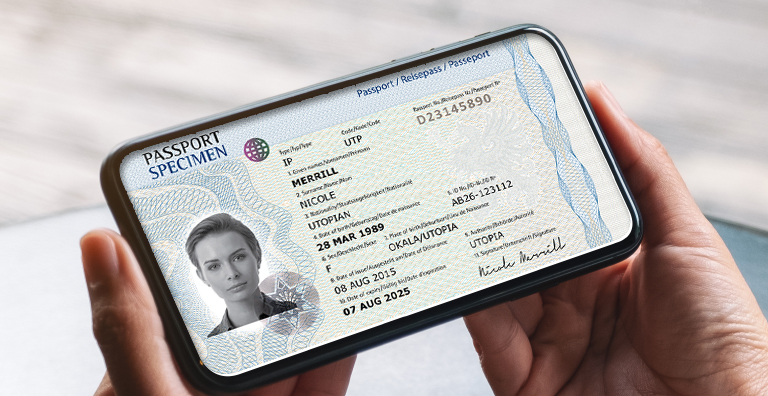Coming Very Soon: The Digital Travel Credential
One of the striking things about Identity Week 2020 was how the industry has started to embrace digital identity in all its forms. Whether this has been accelerated by the need to identify citizens remotely during a pandemic, the fact that digital was just inevitable, or that the technology has leapt forward — the appetite to talk about how digital could be enabled spanned all the workstreams. Digital was promoted in all parts of the exhibition, by established industry players and start-ups or newcomers alike. I found the presentation by the International Civil Aviation Organization (ICAO) on the digital travel credential (DTC) particularly engaging for a number of reasons, which I will elaborate below.
The First Standards for the Digital Travel Credential Are Published by ICAO
The first thing that impressed me was how quickly the DTC initiative has progressed. Only recently, the feeling in the industry was that while digital/mobile would be ideal for certain types of credentials, such as driving licenses, the many issues related to international acceptance and use of the passport would mean many years before its transition to digital. Yet we already have significant progress across the ICAO working group and have the first part of the standard published concerning the digital travel (virtual passport) credential. In fact, some early demos of the DTC have already emerged.
The Digital Travel Credential of the Near Future Will be Virtual and Physical
My initial impression of the approach to the digital travel credential was that it was going to be overcomplicated and difficult to implement because it was split into virtual and physical credentials. However, ICAO’s presentation at Identity Week made it clear that this approach had been given a lot of thought. The approach considers many existing and future use cases for a digital travel credential and also the ability that countries, citizens and other stake holders have to implement the technology. Also, and most importantly, the approach ensures that the security, while different, brings the same level of protection as the e-Passport booklet issuing processes that were used as the benchmark. The approach is also not dependent on a single technology or device, which ensures future interoperability.
The DTC Will Reduce Queues at Borders and Provide Better Service
While security and interoperability are the cornerstones of the policy, the main drivers for the DTC are efficiency and convenience. Efficiency at borders will be improved by sharing the DTC virtual component in advance of travel, so that the receiving country will already have a passenger’s data upon arrival. This will allow the relevant risk assessments to be performed ahead of time, but more importantly for efficiency, it will speed the travelers’ passage through the border by reducing inspection times. By having the data in advance, it is calculated that inspection times can be half of even the most optimized automatic inspection systems. In most cases, even greater improvements will be seen. Clearly, quick passage through a border is more convenient for the traveller, but the DTC will also mean that physical documents do not need to be presented as regularly through the travel process. The processes of revocation and emergency travel authorization will be made simpler and more convenient in the event of loss or theft of a document, while visa acquisition, presentation and authentication processes can be further digitized and made more convenient.
We Will be Moving to a Digital Passport Sooner Than Later I am excited to see how the DTC evolves in the next months and years. The hybrid model enables a staged approach to introduction, and with the first draft of the standard for the physical credential due to be available for comment next year, progress will continue to be rapid. We could all be traveling using our digital travel credentials sooner than we had imagined.
To find out about HID Global’s mobile identity solution HID goID™, check out the brochure.
Steve Warne is Senior Director, Product Marketing, Citizen Identification Solutions, where he is responsible for the marketing and solution strategy related to the development and growth of HID’s government ID business. Steve has more than 15 years of experience in the government identity market.
